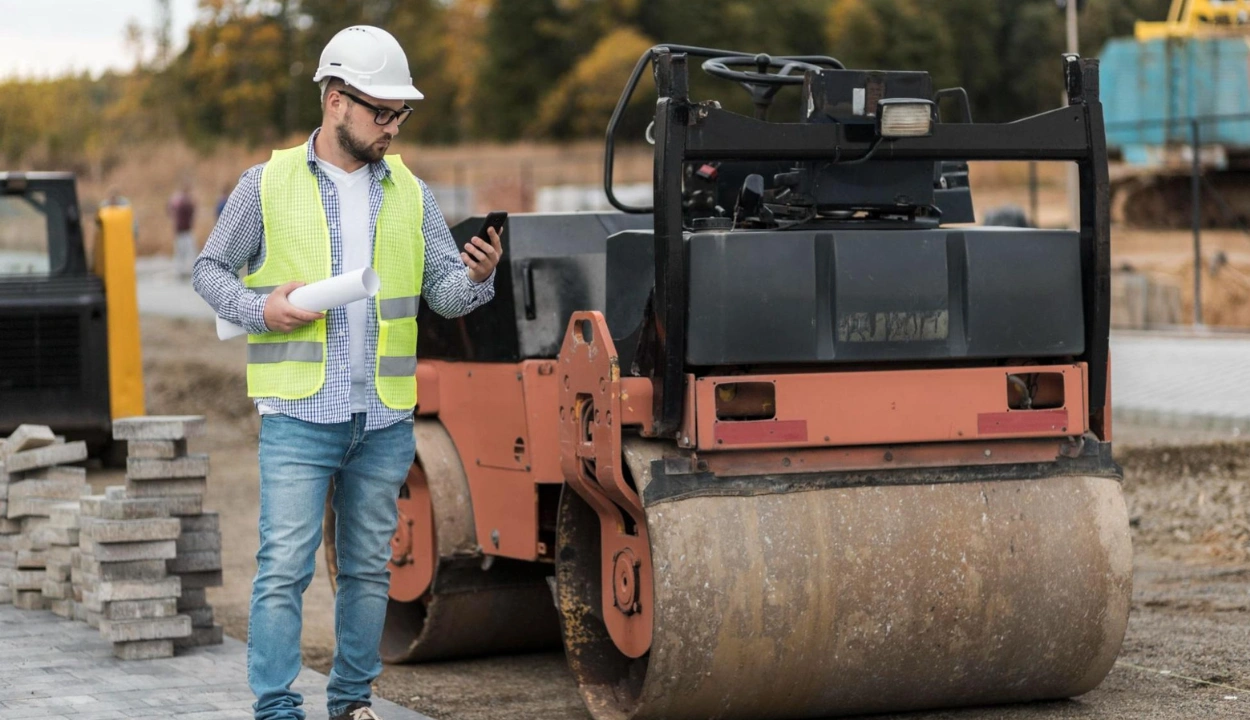How to Prepare for a Software Implementation in Construction Equipment Management
If you have decided to implement construction equipment management software into your operations but don’t know where to start, you are in the right place.
Adopting the right software can streamline operations, improve efficiency, and enhance decision-making processes, whether you're a large construction firm or a small contractor.
The question now arises: how can you implement the right software, and what steps should you follow for optimum construction software implementation?
This is where we come in with a quick how-to guide on everything you need to know about construction software implementation.

1. Define Clear Goals
As a project manager, you should know that before starting any new project, whether software implementation or even procurement, you should have a clear goal in mind.
Start by identifying your current equipment management processes' specific challenges or pain points.
Whether it is difficulty in tracking assets or scheduling equipment maintenance, you should know where your pain points lie.
Carefully look through what you aim to achieve with the new software, whether it’s reducing downtime, optimizing resource utilization, or improving overall productivity.
2. Analyze Current Processes
With a clear goal, the next step is to thoroughly analyze your current equipment management process.
This step will involve mapping workflows, identifying bottlenecks, and documenting all current practices.
By understanding how things are currently operating, you will get valuable insights into areas that need improvement.
This will help you tailor the construction software implementation solutions to meet your requirements.
3. Select Suitable Software
Armed with this important knowledge, you can now choose the right construction management system to fit your requirements.
While selecting the right fit, consider factors such as functionality, scalability, ease of use, and, most importantly, compatibility with existing systems.
Look for software specifically designed for construction equipment management.
This software should offer equipment tracking, maintenance scheduling, and reporting capabilities.
Take advantage of demos, trial periods, and customer reviews to evaluate options before deciding.
You want to test the service before suggesting it to the higher-ups.
This will also count as your additional research into the software and its features.
4. Secure Leadership Buy-In
Securing leadership buy-in (you can check out a few strategic steps here) from stakeholders and construction managers is crucial for the success of any new implementation.
You want to provide the stakeholders with a compelling case, and this will involve you doing in-depth research into the software and looking into the bottlenecks and issues that the construction project is facing and how they can be fixed with the software.
Address any concerns or objections upfront and ensure that top management is actively engaged and supportive throughout the process.
5. Assemble the Implementation Team
If you want effective project execution, you must build the right implementation team.
You can do this by identifying individuals with relevant expertise and experiences.
This team can include people from the equipment management, IT, and, most importantly, project managers teams.
Assign clear roles and responsibilities to ensure everyone understands their responsibilities.
Foster open communication and collaboration among team members to facilitate smooth coordination and problem-solving.
6. Outline Project Scope
Define the scope of the implementation project, including timelines, milestones, and deliverables.
Break down the project into manageable phases or stages with clearly defined objectives.
Establish realistic timelines based on resource availability and project complexity, allowing flexibility to accommodate unexpected challenges or delays.
You want to ensure the project is as easy to follow as possible.
This will help you, as a project manager, identify which stage the project is currently in and what you should expect in that particular stage.
7. Plan Data Migration
If you plan to migrate data from the existing systems into the new system, plan accordingly to ensure that the data's integrity and accuracy are protected.
Access the quality of the existing data, identify any data cleansing or normalizations, and then start developing a migration strategy.
Before doing the final migration, thoroughly test the system before testing and address any issues that might arise while the transfer occurs.
This will help you know what issues can occur between the data transfer and how to mitigate those risks.
8. Manage Change Effectively
Any new addition to an existing process can be met with resistance, so if you plan to implement construction management software, create a change plan that addresses everything.
Start by developing a comprehensive change management plan.
It should include factors such as communication, training, and stakeholder engagement.
Clearly communicate the implementation's reasons, benefits, and how it will align with the organization's goals.
Lastly, users at all levels should receive training and support to help them transition to the new software smoothly.
Let’s briefly break down the above-mentioned topics for clarity.
Develop Change Plan
Develop a detailed change management plan that includes communication strategies, training schedules, and support mechanisms.
Identify potential barriers to change and develop strategies to overcome them.
Engage with end users early to address concerns, gather feedback, and create a sense of ownership and involvement in the project.
Provide Training
Invest in proper training programs for end users.
This will help you ensure the users are proficient in the new software and understand what it can accomplish.
Tailor training sessions to different user groups based on their roles and responsibilities.
Offer hands-on training, user manuals, and online resources to support ongoing learning and skill development.
Encourage feedback and provide additional support to address any challenges or questions.
You want to know the end users' feedback since they will be working with the system.
9. Conduct Pilot Testing
Before you steamroll ahead with the software implementation, slow down.
Start by conducting a pilot test with a small group of users.
This test will help you identify any issues or usability problems in a controlled environment, making it easier to make all the necessary adjustments before the full deployment.
In this step, feedback from pilot users is gathered and incorporated to refine the software and improve user experience.
10. Execute Full Rollout
It’s time to bring out the steamroller because you are now ready to deploy the system entirely into your organization.
In this step, develop a phased-out plan to counteract disruptions and ensure a smooth transition.
Communicate the full plan to all essential users, including its phases, expectations, and support channels.
Once deployed, be sure to provide assistance and troubleshoot where required.
Once deployed, keep your eyes and ears open.
Gather feedback from the new users to see how they are working with the new system and take notes on areas where they might be having issues.
11. Monitor and Evaluate Progress
After the software is implemented, ongoing monitoring and evaluation should be your primary focus to measure progress and identify areas for improvement.
Establish key performance indicators (KPIs) to track the software's impact on equipment management processes, such as downtime reduction, maintenance cost savings, and resource utilization improvements.
Review KPIs regularly and gather user feedback to assess the software's effectiveness and make any necessary adjustments.
This monitoring and feedback can help you identify any issues in the system and create a better strategy to prevent them from occurring in the future.
Conclusion
Preparing for construction equipment management software implementation requires careful planning, collaboration, and effective change management.
Since the software is a new addition, you have to start by defining clear goals, analyzing current processes, selecting the right software, and engaging stakeholders throughout the process.
You can set yourself up for successful implementation using the steps we discussed above.
Best of Luck!
FAQs
Does a software company manage the construction project?
No, a software company manages construction projects only a few times where required. They provide software solutions for project management, while the responsibility for project management lies with construction firms or project managers.
Who should be involved in the implementation process?
The end users and the stakeholders should be involved in every step of the implementation process. Since these users are the most impacted by the new implementation, having them go through the planning and the execution with you helps them better understand the software itself.
What are the approaches to software implementation?
There are three different approaches to project implementation: parallel, phased, and crash implementations. Each approach has its own implementation methods and benefits.
How do you prepare for a software implementation?
A good plan for introducing new software should have clear goals, a detailed schedule, assigning tasks to the right people, and monitoring progress. Tools like Smartsheet, Microsoft Project, and Trello can make this easier.
Transform Your Equipment Management












